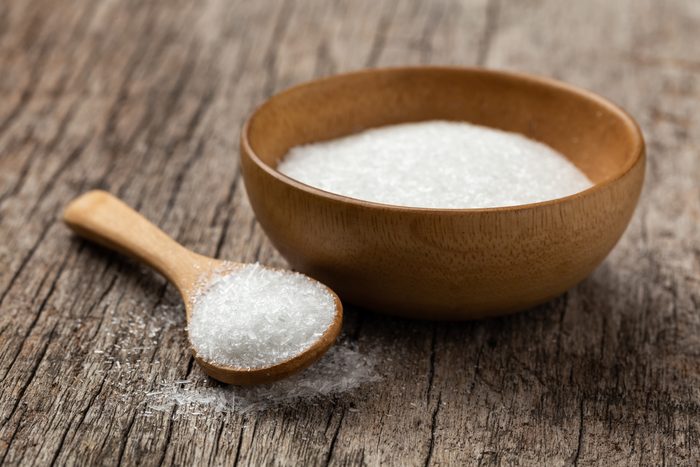A Dietitian Helps Us Debunk the Outdated Myths About MSG

MSG has been unfairly demonized for ages. Now, people are turning to it as a salt substitute. Here's what to know.
Chances are when you want to add more flavour to your food, you reach for salt. It’s a staple in every home and restaurant kitchen, and nearly every dish calls for it. However, eating too much of it has a number of negative health effects: sodium, the main component of salt, can lead to high blood pressure, heart disease and stroke.
If you’re watching your sodium intake, you’ve probably looked to alternatives to make food tastier. MSG, or monosodium glutamate, is one option that’s long been a staple in Asian cooking and is now growing in popularity in North America as a flavour additive. “MSG has a third less of the sodium than table salt, so when you use it in your cooking, it helps you cut down on sodium,” says Michelle Jaelin, a Hamilton, Ont.-based registered dietitian. What is it exactly? MSG’s an amino acid that’s found naturally in a number of foods like Parmesan cheese, mushrooms, seaweed, anchovies and protein sources like tuna fish, chicken and beef, according to Jaelin.
How does MSG taste? Chiefly, umami—a flavour that’s hard to describe. “On your tongue, you have different taste receptors: sweet, salty, sour, bitter and umami,” says Jaelin. “Umami is that savoury taste that you can’t quite explain. It’s a little bit salty, but it’s more than that. It adds a depth of flavour. You can taste the umami on things like tomatoes and mushrooms.”
If you want to use MSG as a seasoning, you have to buy it as a powder (typically made by fermenting ingredients like starch and sugars) and then use it as you would salt. But is using MSG in place of salt a healthy choice? Here’s what you need to know.
What are the health benefits of MSG?
MSG is undeniably delicious. Jaelin says it’s a good alternative to salt and can make healthy foods taste better.
Many of her clients struggle to add more veggies to their diet because they don’t like how veggies taste—in particular, they say they’re bitter. MSG can help with that. “If you add a little bit of MSG [when stir-frying or sautéeing veggies], it’ll add another dimension of flavour to the vegetables,” she says. “That’s a really great health benefit—it gets people to eat more vegetables.”
Is MSG bad for you?
For decades, MSG has been demonized as a toxic addition to food. In the late ‘60s, a doctor wrote a letter to the New England Journal of Medicine speculating that a number of symptoms he was experiencing, from limb numbness to heart palpitations, were from the MSG in the Chinese takeout he consumed. The term “Chinese restaurant syndrome” became popularized, as did the association of illness with Chinese food, which gave both MSG and Chinese restaurants a bad reputation.
The stigma against MSG and Chinese food led to xenophobic and racist attitudes towards Chinese cuisine and people. “Negatively associating MSG with only Asian food, in particular Chinese food, showed the racist biases towards it,” Jaelin says. “MSG is found in a number of foods. People don’t say, ‘after eating Parmesan cheese, I felt sick from the MSG.’ They only say that after eating Chinese food.”
In recent years, the correlation between MSG and symptoms like migraines and heart palpitations has been debunked. Research has found that MSG sensitivity only occurs for a small percentage of people, and the effects disappear in less than an hour—meaning, MSG is perfectly safe to consume for most people.
So, should I replace salt with MSG?
It’s up to you! Using MSG in your cooking might be a good way to decrease the amount of sodium you’re eating. Lowering your sodium intake is important for maintaining a healthy lifestyle, especially if you’re someone with high blood pressure or heart disease. Plus, it’s a good way to up the umami factor in your food and to make your favourite dishes even more flavourful.




